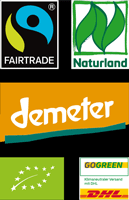- Coffee prep
The Chemex – worth the hype? Or not?

Karsten Suhr
On the producer’s website you find a variety of different models, but I decided for the classic one.
But let’s start at the beginning. The Chemex was invented by the chemist Peter Schlumbohm in 1941. It counts as one of the best products of the modern age and was added to the collection of the Museum of Modern Arts (Moma) in New York in 1958. It is used to filter coffee the same way as it’s done with other pour over methods (e.g., with the porcelain filter with the big M or the Hario V60). The difference is that the Chemex has a special filter paper made from pulp which is thicker. It allows to remove coffee oils and sediments much better. That way, you get a very “clean”, clear coffee, with defined acidity and few bitter compounds. The disadvantage: You can only buy the filters directly at Chemex and you must throw them away after using them. On the other hand, you do not need any power, if you leave aside the boiling of the water.
Cup size, filter circle, accuracy.
These are the main points you need to consider when using the Chemex.
Let’s start with the size of the carafe: Like the French press coffee, Chemex coffee turns out best, when you brew a whole carafe (that is about the only similarity). So, I got myself a smaller version for only three cups – my regular morning-intake.
Second point: The filter. While classic filters have a flat bottom, Chemex filters look like a cornet. That way, the water is supposed to run steadier through the ground coffee, which perfects the extraction. I bought the pre-folded filters recommended for the 3-cup-Chemex. When you place the filter in the carafe, make sure (important!) that the spout points towards you as well as the 3-layered side of the filter.
Grinding level, amount of ground coffee in relation to water, and water temperature are by the way the same as for other pour over methods:
- 0.21-0.25 oz / 3-4 fl oz water
- 205 °F water temperature
- Average brewing time = 4 minutes for 17 fl oz water
- Grinding degree: average
The accurate brewing process is also the same:
- Moisten the filter completely with warm/hot water
- Put the (preferably) freshly ground coffee into the filter and shake it a little to get a flat surface
- Pour a small amount of water in the middle of the ground coffee and then, wet the entire ground coffee with a circular motion
- Wait for about 30 seconds (blooming phase)
- A second pour in a circular motion. Always wait until all the water has run through the ground coffee completely.
- Repeat until all the water is gone.
And then: Try it. It is quite interesting that everything is completely identical to other pour over methods, and yet: In the end the result from the Chemex is a different one. As mentioned before: Very clear, with fine acidity, and an emphasis on floral flavors. Humor yourself and prepare the same coffee in a French press. You will taste an enormous difference. I used our Arabica Crema, which has a nice dark roast, which is perfect for the French press. And develops completely different in the Chemex. Fascinating.
If you are looking for some tips on using the French press, check out this article in the section Coffeeprep.
The last step: Cleaning the Chemex carafe. According to the manufacturer, the filters are compostable and biodegradable. So, they can go into the organic trash. The carafe can be washed in the dishwasher. Make sure though, to remove the wood collar.
My conclusion: The Chemex looks amazing, which is an absolute plus for a design freak like me. The coffee is also a piece of art, but not the kind of revelation I expected. It takes leisure to brew it, which is another plus point for me. On the other hand, there are the costs for the carafe and the filter paper. In this respect, it is a lovely gift for every coffee aficionado. Not only for Christmas.



